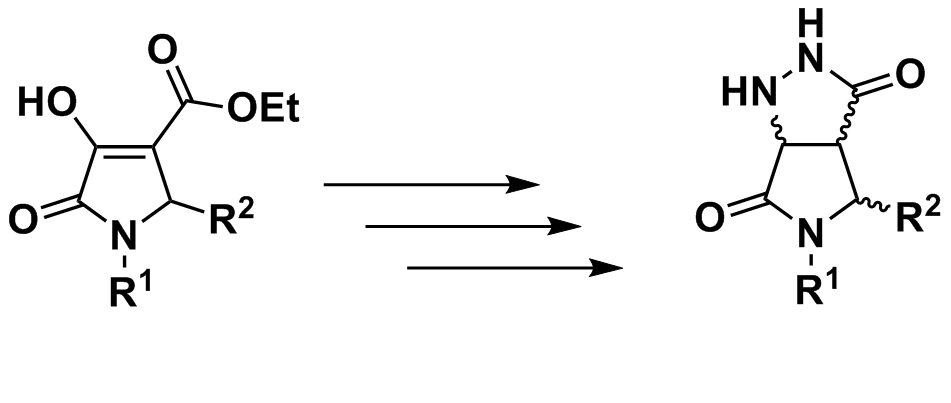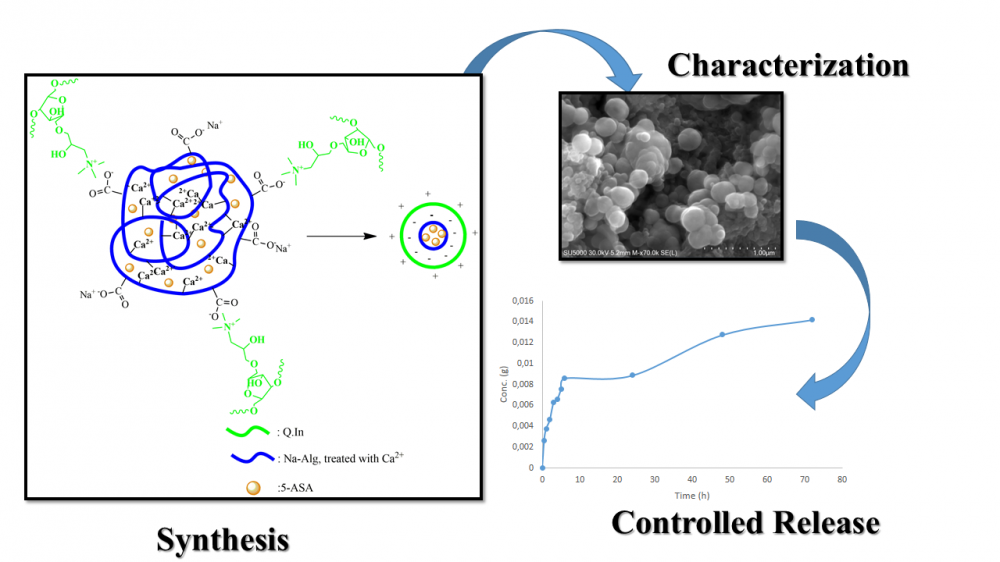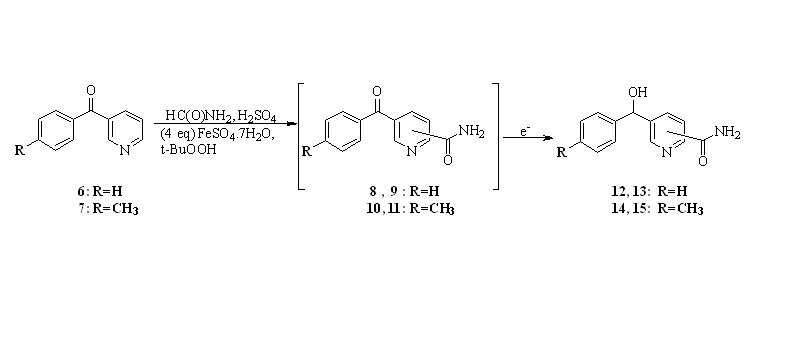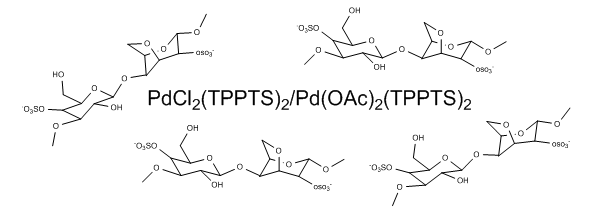Organic Communications
Year: 2019 Volume: 12 Issue:3 July-September
1) On the 150th anniversary of Markovnikov Rule

In 1869, Vladimir Vasilyevich Markovnikov, a Russian organic chemist from the University of Kazan formulated in his doctoral thesis the famous rule which is named after his name. According to this rule: When an unsymmetrically substituted unsaturated hydrocarbon reacts with hydrogen halides, the halide adds to the least hydrogenated carbon, that is to the one which experience more influence from the other neighbouring carbons. In other words: when an unsymmetrical alkene reacts with a hydrogen halide, the hydrogen adds to the carbon that has the greater number of hydrogen substituents, and the halogen to the carbon having the fewer number of hydrogen substituents” Markovnikov’s rule predicted the regioselectivity of electrophilic addition reactions of alkenes.
DOI http://doi.org/10.25135/acg.oc.60.19.07.1358 Keywords Markovnikov Rule Vladimir Vasilyevich Markovnikov DETAILS PDF OF ARTICLE © 2019 ACG Publications. All rights reserved.2) An unprecedented synthesis of some novel 3,4-fused pyrazolidinone-γ-lactam bicyclic moieties from 2,3-dioxo-4-carboxy-5-(subtituted)pyrrolidines

A new pathway for the synthesis of novel 3,4-fused pyrazolidinone-γ-lactam (4) starting from 2,3-dioxo-4-carboxy-5-(substituted)pyrrolidines (1) was developed. The key synthetic strategy involved hydrazonation of the precursor 1 followed by subsequent reduction reaction of the enamino ester 2 and intramolecular cyclization reaction to furnish the unprecedented 3,4-fused pyrazolidinone-γ- lactam (4) in reasonable yield. The structures of all synthesized compounds were confirmed by spectroscopic methods and chemical transformation.
DOI http://doi.org/10.25135/acg.oc.62.19.07.1323 Keywords Pyrazolidinone-γ-lactam Pyrazolidinone Pyrrolidinone Bicyclic γ-lactam DETAILS PDF OF ARTICLE © 2019 ACG Publications. All rights reserved.3) Synthesis and engineering of sodium alginate/inulin core-shell nano-hydrogels for controlled-release oral delivery of 5-ASA

Protection of drug molecules from digestive enzymes and providing their controlled release at the site of intestinal inflammation are the most important aims of oral nano drug delivery systems (NDDSs). Encapsulation and controlled release of 5-aminosalicylic acid (5-ASA), which is a well-known anti-inflammatory drug, for effective treatment of Crohn’s disease, ulcerative colitis and inflammatory bowel disease (IBD) were aimed in this study. For the preparation of core-shell structured NDDSs, 5-ASA loaded sodium alginate (Na-Alg) cores with negative surface charge were prepared by calcium chloride crosslinking of Na-Alg and subsequently coating with quaternized inulin (QIn) via Coulomb interaction. As a shell layer, QIn was separately synthesized by quaternization of inulin with glycidyl trimethylammonium chloride (GTMAC). While the crosslinked Na-Alg core is responsible for the protection of 5-ASA from acidic pH in stomach, quaternized inulin shell, known to be highly mucoadhesive, was implemented for digestion by the intestinal flora providing controlled release of 5-ASA at inflammation site of small and/or large intestine. Characterization of NDDSs was carried out using GPC, FT-IR, 1H-NMR and SEM techniques. Ideal slow release of 5-ASA was obtained with the from spherical particles having core and shell sizes of 84-100 and 156-198 nm, respectively.
4) A study of Minisci reaction by changing Fe2+ equivalency: Preparation of arylpyridinyl methanol

We aimed the synthesis of carboxamide 8 and 10, however, beside the main product, one more species was detected in the reaction solution. The characterization of this side product showed that it was the other isomer of the main product. To establish reaction conditions for the synthesis of carboxamide derivatives, we have set up several experiments by changing the Fe2+ stoichiometry. When a molar equivalent Fe2+ was used, only two reaction products 8 and 10 were obtained. The increase in Fe2+ stoichiometry caused the formation of side product 9 and 11 even formation of reduced alcohol products (12-15) by Minisci reaction.
DOI http://doi.org/10.25135/acg.oc.64.19.06.1309 Keywords Minisci reaction nicotinamide isonicotinamide diarylmethanol DETAILS PDF OF ARTICLE © 2019 ACG Publications. All rights reserved.5) Heterogeneous iota carrageenan-based palladium catalysts for organic synthesis

Novel heterogeneous iota-carrageenan-based palladium catalysts were prepared and used in Suzuki cross coupling, Heck coupling and the transfer hydrogenation of olefins while using various substrates and solvents. In all of these reactions, heterogeneous systems based on xerogels or hydrogels were found to be active, and in certain cases, they yielded higher conversions than those of the homogeneous parent systems. Moreover, all the catalysts could be easily separated from the reaction mixtures and recycled without loss of activity.
DOI http://doi.org/10.25135/acg.oc.61.19.07.1313 Keywords Polysaccharides heterogeneous catalysis heterogenization Suzuki reaction Heck reaction transfer hydrogenation DETAILS PDF OF ARTICLE © 2019 ACG Publications. All rights reserved.6) A Calix[4]arene-tren mdified electrode for determination of Lead ions in aqueous solution

In this study, a simple and sensitive electrochemical sensor based on Calix[4]arene-tren (Calix-tren) modified glassy carbon (GC) electrode was developed for the determination of Pb (II) ions. Electrochemical behavior of Calix-tren modified electrodes were investigated by using cyclic voltammetry (CV) and electrochemical impedance spectroscopy (EIS). The results indicate that Calix-tren modified GC electrode provides good electron transmission pathway than bare GC electrode. The amount of Pb (II) was determined by differential pulse anodic stripping voltammetric analysis as a sensitive detection technique. The experimental parameters such as pH, deposition time and deposition potential were optimized. The optimum pH value was selected as 7.0. The effect of deposition potential and deposition time on the peak current was tested and the optimum values were chosen as -1.2 V and 120 s, respectively. Under the optimal conditions, the working range of the developed sensor was determined as 0.48-2.31 µM, limit of detection (LOD) was 0.11 µM and the RSD obtained in the reproducibility study was 2.78 %. It was also found that the developed method could be used in the determination of Pb (II) ions in real samples with satisfactory results.
DOI http://doi.org/10.25135/acg.oc.65.19.07.1330 Keywords Calix[4]arene electrochemical sensor Pb (II) DETAILS PDF OF ARTICLE © 2019 ACG Publications. All rights reserved.7) Synthesis and in vitro activity of oleanane type derivatives against Chlamydia trachomatis

Modified synthesis of 3β-nicotinoyloxy-olean-12(13)-en-28-oic acid and 3-deoxy-3a-homo-3a-aza-28-hydroxy-olean-12(13)-en from natural occurring oleanolic acid is suggested. These compounds and two others of ursane and lupane type triterpenoids (3-oximino-urs-12-en-28-oic acid and 3-deoxy-3a-homo-3a-aza-28-hydroxy-lup-12(13)-en) were screened in vitro against Chlamydia trachomatis strain F-3271/Belarus/2015. Oleanane triterpenoids became the leading compounds with chemotherapeutic index > 8 and were chosen for further research.
DOI http://doi.org/10.25135/acg.oc.66.19.07.1352 Keywords synthesis triterpenoids oleanane ursane Chlamydia trachomatis DETAILS PDF OF ARTICLE © 2019 ACG Publications. All rights reserved.
